Property Week and Dentons brought together an expert panel from across the later-living sector to discuss the opportunities for growth and what is holding the sector back from expanding at the level other countries are.

Panel of experts
Honor Barratt, managing director, Birchgrove
Will Bax, chief executive, Retirement Villages Group
Allen Chilten, head of funds (capital markets), Patrizia
Basil Demeroutis, managing partner, FORE Partnership
Andrew Ovey, head of healthcare, AXA IM Alts
Jose de Pablo, director of healthcare acquisitions, Harrison Street
Roy Pinnock, partner and head of UK planning, Dentons
Deepa Deb, partner and head of UK real estate, Dentons (co-chair)
Liz Hamson, editor, Property Week (chair)
Anviksha Patel, chief investigative reporter, Property Week

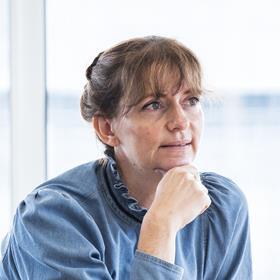

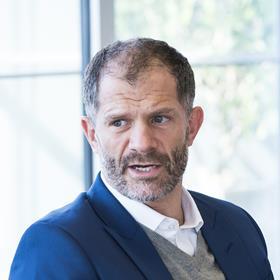



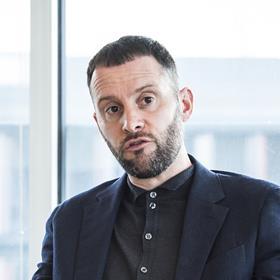
The focus for those working in the later-living sector in early 2020 was survival, to keep their residents safe and secure, and this has led to new ways of working.
Now with new entrants investing in the market and a new housing secretary, operators and investors can set aside survival mode to seek opportunities for growth.
Property Week and Dentons set up a roundtable with some of the industry’s leading figures to discuss the challenges and opportunities the market faces in the future.
Liz Hamson: What’s next in tangible terms for the later-living sector in the UK?
Basil Demeroutis: We’ve backed an operator that is building 120 units in Bristol. We’re keeping some interesting, lovely villas that we are converting into flats, which amounts to a third of existing buildings.
What’s interesting is that it is a for-sale model, as opposed to the rental model. Part of the economics for the asset is really this deferred management fee (DMF) concept where we’re charging some amount on the way through in terms of service charge to the occupiers. But we’re also leaving some of that for the back end, at the sale. When a resident sells their home, you charge sometimes 20% to 25% of the purchase price, which we keep. We think that’s interesting, because it keeps operating costs low on the way in if you’re an occupier.
LH: Would you consider a for-rent model?
BD: We would do either. I think it’s horses for courses; it depends on the market and the asset. I think it’s too early to tell whether the for-sale model is going to work and whether the market accepts DMFs. We think it will but it’s early days.
Jose de Pablo: In short, the answer is yes, but there are a lot of variables to consider. For example, the UK market has been traditionally more of a for-sale model, whereas in the US, it is primarily a rental model. Understanding the demographics and specific needs of the residents as well as the markets where they are located is key to getting the rental model right in the UK, which is still in the early days. It is not clear yet if rental is going to attract the same residents as a for-sale model does. It’s something we’re looking at closely.
From an investor perspective, we have found that retirement rental models tend to work very well with many investors looking for an income model in the living sectors, as long as the needs of the residents are being met.
BD: Plus we haven’t seen enough exits on DMFs. I think the DMF is an amazing product especially for insurance companies, and people who are looking for long-term, stable cashflow.
Will Bax: It is important just to take a step back and see where the UK market has come from, because it was a market that grew from entrepreneurs seeing what was happening in other geographies and seeking to provide something similar to a UK market.
It’s been fairly opportunistic I suppose over time, until more recently when large institutional investors – the likes of AXA IM Alts, L&G, Goldman Sachs – have started to come in at scale and say ‘hang on, there’s something quite interesting here’, particularly as the DMF model has been validated.
We, as an operator now, do both DMF and for rent. Forty per cent of our transactions for the current year to date are rental.
Allen Chilten: What’s the average age of the occupant?
WB: Our average age across the group is about 82; the youngest would be late 70s and the oldest would go up to mid-to-late 80s.
AC: I ask about age, because we’re actually trying to go lower in that age group – around 65-plus – while maintaining the same philosophy and supported by a joint venture on the care side.
To your point about the history of where we come from and where we’re going, it’s also based on capital allocation, because 20 years ago pension funds didn’t need alternative property let alone in healthcare to hit their return requirements.
Now, with a low-interest environment and some traditional real estate sectors looking more uncertain and others delivering less value, the hunt for decent returns is more competitive than ever and is attracting investment managers into new segments of the market.
All residents and staff wear a watch. No one’s allowed to go through the day without doing 1,000 steps
Honor Barratt
Pension funds and insurance companies want to come into that market and they don’t necessarily want to be seen as taking on more risk, in their view, by opting for the sales rather than rental route. We see it in the general residential market. A lot of pension funds are happy to do the build-to-sell model, whereas here in the UK, build-to-sell for pension funds is deemed riskier, so they go for the rental model.
As the increased capital flows come into the sector, you’ll get more longer-tenure money, which is willing to buy that investment-grade stock. The challenge is it needs to be built in the first instance.
LH: What would you hope to see? Are you looking at multi-tenure potentially? What about this sustainability piece? Is that critical for you?
AC: Our purpose since our founding in 1984 has been very clear: to build communities and sustainable futures. We were one of the first independent investment managers to integrate ESG into all our processes and one of the first to recruit seasoned sustainability experts. And now we’d like to go from being sustainable to impact investing by making measurable environmental, social and financial returns.
Deepa Deb: There were some brilliant examples of the elderly being very well looked after. For those of you with existing portfolios, how did you fare and what do you think the learnings are from that going forward?
HB: We moved in on site; we locked the door behind us as we thought that was the best way we were going to keep people safe. We had no infections.
We were remotely isolating with 50 other people and actually one of my challenges coming out of the pandemic is getting these guys going out again.
I loved the pandemic because we made it through without any infections or deaths.

The tech advances that we’ve made in that period are because we were locked inside our own buildings. We had unique opportunities to sleep in that bed and see what didn’t work etc. Probably for me one of the biggest realisations was getting an emergency call, running down a corridor and not knowing what you’re about to walk into. The tech was not supporting that.
All residents and all staff wear a watch. The residents know it as their pedometer and no one’s allowed to go through the day without doing 1,000 steps. But what I know is that it’s got a fall monitor so if they fall then we can see that and so fall rates dropped. Crucially we can see when their temperatures drop too and that tells you there’s an infection coming. We can see heart rates to monitor alcohol consumption because when you get dementia, your head stops listening to your body.
LH: It’s discreet as well because this is a fancy piece of kit…
HB: We feel that we’re all the same.
The only challenge is getting them to charge the watch and so we have to use sonar in some apartments. It sounds an alarm if they get up and fall, but that just goes into the apartments of people who are really vulnerable. It was only Covid that forced that.
WB: I think what’s become interesting in tech is the innovations are now almost available off the shelf in a way that they weren’t previously and that makes it much easier to retrofit into existing communities as well as build into new communities.
Similarly to Honor, we had an amazing experience of gaining confidence in our operational resilience. We locked down pretty early, much to the frustration of our residents, but that ensured that we kept them safe. We had eight infections among 2,000 customers over the pandemic, and the majority of those were within hospital transmissions, not within community transmission.
How do we actually provide something that fulfils the purpose for where you are in your life?
Basil Demeroutis
We have nearly 400 people across 16 sites and what the pandemic did in terms of creating a culture in our workforce around purpose was phenomenal.
That culture started bleeding across both ways from our community into our workforce and created an amazing social contract between both sides.
Our prospective purchaser list doubled. It’s up 100% from the April the pandemic landed on us to April 2021. Our property transactions were up year on year, in spite of being locked down during five months of the pandemic. A large part of those were rentals.
The importance of those communities in providing social support networks was extraordinarily important in ensuring that the communities come through this emotionally resilient. Who knows where the mental health issues for all of us lie, but my bet is that within these communities, they’ll be better placed than many.
The final point was around stigma, and having spent a year watching people in care homes dying, or standing the wrong side of the glass from their loved ones, we got a sense of what later living could be as both a massive threat and an opportunity for our sector, because it’s crystallised the view of older age that is so different from what we’re doing. And therein lies the opportunity if we can get on the front foot and break down those perceptions.
LH: Did you have residents who were fearful that they would contract Covid and then be shipped off?
WB: Of course. They were ultra vulnerable so there was a high degree of fear and concern, which in some ways made it easier to encourage them to bear with us and to make steps around how the bubble was implemented.
Single point of entry, for example, wasn’t a thing we’d ever considered pre-pandemic, but now we make sure that all movements come via reception so they can check in and we can test them.
In the early days, it was extremely challenging because this cohort are not interested in being told what to do.
DD: What do you think the learnings from the pandemic mean for the design of these types of living residences?
BD: We have this image that we’ve historically sold later living with the old people sitting on a sofa, drinking a glass of Chardonnay or going for a nice walk, holding hands. These are such hackneyed images, and I’m just so done with them.
The idea that somehow moving in is a compromise and if you come to our properties we’ll try and make it as painless as possible; I think we’ve got to pivot from that antiquated, backwards-looking attitude to the fact that if you’re 75, you might have 20 to 25 years of quite purposeful life left in you. It’s just that you might be needing a different context and different environment in which to do that, but you can still contribute positively to society.
The ageing demographic is the iceberg that has been coming towards us for several decades
Andrew Ovey
How do we actually celebrate and provide something that fulfils the purpose for where you are in your life? Absolutely it’s around the community space. It’s around letting people curate that space in whatever way makes them happy.
LH: How do you bring communities into closer proximity and develop a more mixed use in that sense?
BD: It has to be natural for both younger and older people. You can’t go to an 18-year-old and say ‘go talk to this elderly person’. It’s not going to work.
You have to give them a reason to go, be that a shop or a farmers market or something around rehabilitation. It might be through the sheer joy of cycling or reading or passion for art and photography. It has to be something authentic.
LH: I don’t know why retirement living schemes don’t do what schools do often, such as hold farmers markets on school grounds…
WB: With some operators, that’s the direction of travel. We see our future about building in highly connected urban neighbourhoods where your ground-floor plate becomes completely public, whether it’s a restaurant or it’s a gym. Our leisure project in West Byfleet is a great example: 70,000 sq ft of retail, leisure and community space on the ground floor that is open to everyone.
We’re building public library, a co-working space, a restaurant and a gym, and we’re looking at the potential for a nursery. We’re building a new public square for the town so, of course, there’s going to be a market every Saturday.

That offers not only that opportunity to break down the perception of ‘what is this weird place full of old people?’ But it also offers a huge potential for social programming for us around how you leverage the skills and expertise of this group.
LH: So that’s the easiest win, but then you’ve got the planning regime to overcome. Do you see progress being made there?
Andrew Ovey: Planning is a skill and first and foremost it’s a conversation, right? When you take people on this journey, you start from what they perceive.
Have a conversation with a town about what they actually want, and you engage with them, then you get the positive outcome that we had in West Byfleet, which is light years ahead of other projects under consideration in the area.
BD: If you go into it with the typical developer smash-and-grab attitude and the us-versus-them mentality, it’ll never work.
You need to go in and give them what they want, which is effectively healthy, happy residents. Sustainability is high on the agenda now for every council, so it’ll be easier if you can give them a scheme in a net zero wrapper.
WB: We have to move away as an industry from seeing it as packaging an offer to being entirely genuine around what the community need is. The conversation in West Byfleet was a year of community consultation that allowed us to reframe an existing planning application.
It was all about need. What does this community need to be successful? In the broadest sense, we’re going to develop some homes and amenities for older people, but what do the younger people and families and local businesses need?
At the moment, we’re seeing confusion in government due to the myriad ministerial changes
Will Bax
You also have to be clear and open; you can’t respond to everything. You will make best endeavours to create a project that is both viable as a commercial business proposition while responding to long-term issues in a community.
It doesn’t matter what you build. If you rock up as an office developer, and you don’t have a point of view as to the community that you’re building in, and what they think, and how you’re going to be useful to them, guess what: it’s going to be hard.
DD: Are authorities sophisticated and committed enough to understand it?
Roy Pinnock: Firstly, resourcing is massive because getting anything through the system, whether it’s novel or not, is really challenging. There is a risk in badging later living as novel. There is enthusiasm in terms of exploring challenges from investors, but why have that conversation in planning? Why badge later living as something that’s new. Reframing that as building homes, being part of the community and making a contribution is really important.
One of the challenges is when we talk about need and demand. I think the sector needs to do more in terms of communicating within the local plan process, and the planning policy formation process, about what need looks like for this demographic and why it is significant for other demographics.
I think the other challenging elements are uncertainties about the model, particularly the deferred charge, and what it is going to look like for affordable housing provision.
LH: Do you think the debate has moved on now, accepting that it’s coming in and it’s all about quality and that’s going to be the sell?
WB: Currently there is no level playing field as to how planning policies are interpreted at local authority level for that type of use. Therefore, there are local authorities that have worked a little harder to understand the demographic needs of that community and then there are lots of local authorities that don’t have a point of view on that. That creates this extremely challenging landscape.
LH: What needs to happen to change some of these attitudes?
WB: There needs to be a planning use class for housing with care.
RP: I think the emotive element of this when it comes to planning, when it does get emotional, is about care and the loss of opportunity. If you do this on this side, are we excluding other people, because it’s a very high-end product, for example?
AO: I’m going to disagree [that a housing with care use class would exclude people, because it’s a very high-end product], and because adult social care in this country is extraordinarily expensive. Only those few people with low lifetime savings and high care needs have their social care costs paid by the state. Everyone else has that cost sitting in their own lap.
The reason I’m in healthcare is to fund lower costs of care settings, because the ageing demographic is the iceberg that has been coming towards us for several decades. And it will sink us unless we change direction.
Fundamentally we have to drive cost out of care and [housing with care] is a great way of [reducing costs] because you are providing care in a much more communal setting.
WB: This is the conversation that we need to really amplify through good data and there is some good data in the market ready, but we need more of it.
If you’re looking to tackle social care, and you’re looking to tackle a housing crisis, this is the silver bullet.
BD: We can see with great clarity what the problem is more than ever. Our system, which was broken before, is even more broken now, if that’s possible. All we need is government to get out of our way things such as planning.
Ultimately, the planning system has an amazing array of powers to just do anything that you want – it is about political will
Roy Pinnock
We need clear, unambiguous, semi-permanent policies and just to let us go and do what needs to happen.
AC: We continue to make better use of the data we have access to and improve its viability, which allows us to present an evidence-based case that is incontestable.
WB: Honor and I are on the board of a trade group, the Association of Retirement Community Operators (ARCO), for the market here in the UK.
There has been a proposal for a housing-with-care taskforce, which has been agreed between all the respective departments that it touches. That’s been sitting ready to be activated since April and the government has yet to activate it.
It feels like a very small political step for someone to pull their head above the parapet and get this debate on the tracks at a time when they’re looking at social care. But at the moment, we’re seeing confusion in government due to the myriad of ministerial changes.
LH: Do we think Michael Gove is good news?
WB: He’s a radical minister, and he’s an effective minister. I would have thought that now is a very good time to be having a conversation with that department.
RP: Why is what we’re going to do here going to benefit more than just affluent people who buy these units? And I’ll just put it bluntly, because that’s how it gets spun back. Explaining how this use of the land is going to help free up demographically useful housing stock, which means you don’t need to build as much on the green belt, is important.
LH: I want to get a sense of where we’re going in the next 12 months and how bullish you are about this sector and what you think is the greatest potential threat and the greatest opportunity…
AO: The opportunity is through engagement with the government. I think the threat from an investment perspective is the risk of things going wrong.
HB: This is a massive demographic to cater to, who couldn’t ask for better conditions. Maybe the threat is: are we good enough? We’ve got to be really bloody good.
AC: In my view, there are opportunities to better use data and we have a responsibility to demystify of what later-living homes actually are. By that I mean explaining the positive environment and tailored facilities they provide for people whatever their age, regardless of their level of independence or circumstances.
JdP: The opportunities are many. We think the near- and long-term demographic fundamentals are very attractive. There is a growing cohort of elderly people that are likely going to become residents in these facilities and who are going to demand a high quality of living. This means great facilities, great amenities and great service. The threat is execution. Any large-scale failure by any market participant would be a big setback for the industry.
RP: I do think there are really strong parallels with build-to-rent, not chasing down a rabbit hole on use class. There are other issues around where we should be making contributions to affordability – whatever it’s going to be, that’s going to have to come off land price. It’s going to have to be done in a way that people can invest in and that can only be done through policy, because otherwise you always end up as the underbidder.
Planning has got barriers, but it’s just a ringmaster for all these issues. Ultimately, the planning system has an amazing array of powers to just do anything that you want so I’m completely optimistic, but it’s about political will to do it and clarity about policy ‘asks’.
BD: I’m especially bullish around the innovations happening in design, not only of course with low-carbon design, but the way that we think about the interiors of flats and the ways we think about landscape architecture, community space. I think it’s a real golden era for architecture and design, which I think is ripe for disruption as we’ve been doing it the same way for too long.
WB: I’m hugely excited and optimistic as well. The sector is an extremely interesting place to be principally I think because of its social relevance. Of any real estate asset class, this has social value opportunity in spades, not simply because of its pre-evident purpose of building for an ageing society, but through the colour of the capital that has started to move into the space. The long-term view of that capital allows me to be delivering net zero carbon projects and be very progressive delivering schemes with social and environmental impact. The opportunity is this housing-with-care taskforce and ensuring it crystallises into a sensible policy agenda.
DD: Thank you, everyone. As operating real estate businesses go, this is one where we can all really add value and feel good about what we’re doing. It seems to me that this is a critical time.
We talk about when is the right time to take that handbrake off: it’s now. It’s about galvanising the clever people around this table to actually get that taskforce going in the right ways and make those policy changes.

























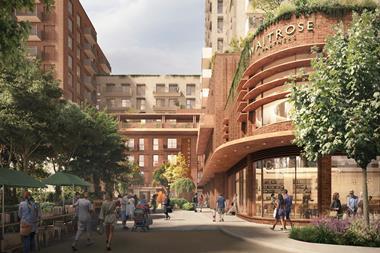



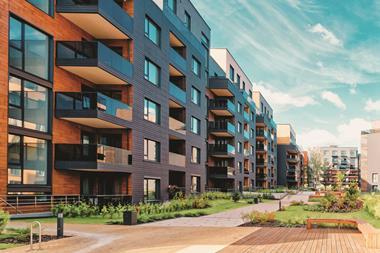

No comments yet